#Matt Sunderland
Explore tagged Tumblr posts
Text
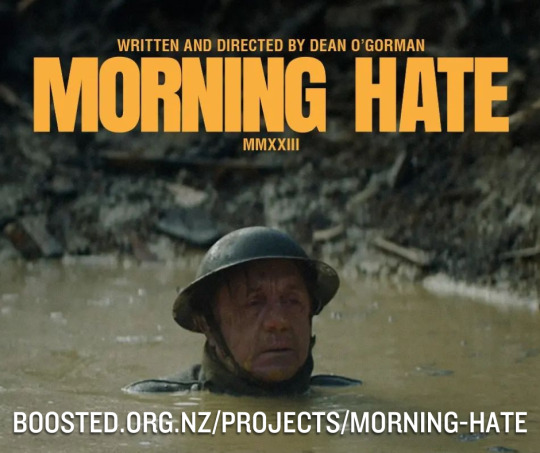

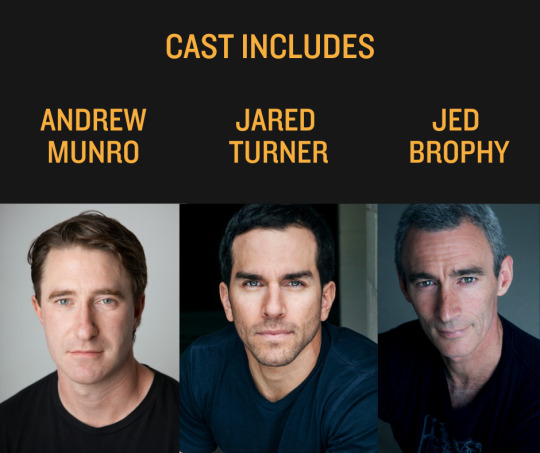

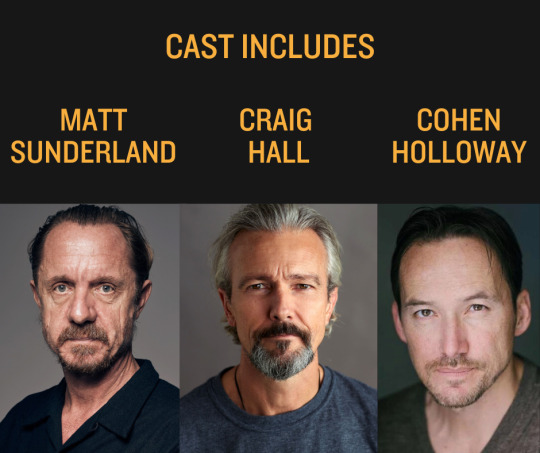

Morning Hate is a short film written and directed by Dean O'Gorman, about stretcher-bearers in the first world war.
They are crowdfunding to help complete the project, and the the Boosted campaign has hit its initial goal of $15,000 NZD!
They're working toward their stretch goal to try to hit $25,000 NZD, so if you were hoping to support the project, they could very much use the support!
Dean posted on his Instagram that they actually needed $25,000 but because Boosted is an all-or-nothing platform, they set the goal to $15,000 because they thought they might be able to get that.
If you can donate, any amount helps! Sharing is also very helpful! 💛
#morning hate#dean o'gorman#dean ogorman#dean o’gorman#aidan turner#graham mctavish#alexander borgers#cohen holloway#matt sunderland#craig hall#the hobbit cast#sara wiseman#jared turner#jed brophy#andrew munro#milo cawthorne#david de lautour#reef ireland
73 notes
·
View notes
Text
Morning Hate
The requirement to suspend your humanity is one of the many tragedies of war.
This is the theme of the new film, Morning Hate, written and directed by Dean O’Gorman, executive produced by Aidan Turner and Graham McTavish, cast members of The Hobbit. Starring Matt Sunderland (Pearl, The Stranger), Craig Hall (A Place to Call Home, Sweet Tooth) and Cohen Holloway (The Power of the Dog, Rūrangi) and Jed Brophy. Go to https://www.boosted.org.nz/projects/morning-hate to read more about how to support the postproduction of this film.
#dean o'gorman#aidan turner#graham mctavish#the hobbit#jed brophy#matt sunderland#Cohen Holloway#Craig Hall#Morning Hate
5 notes
·
View notes
Text

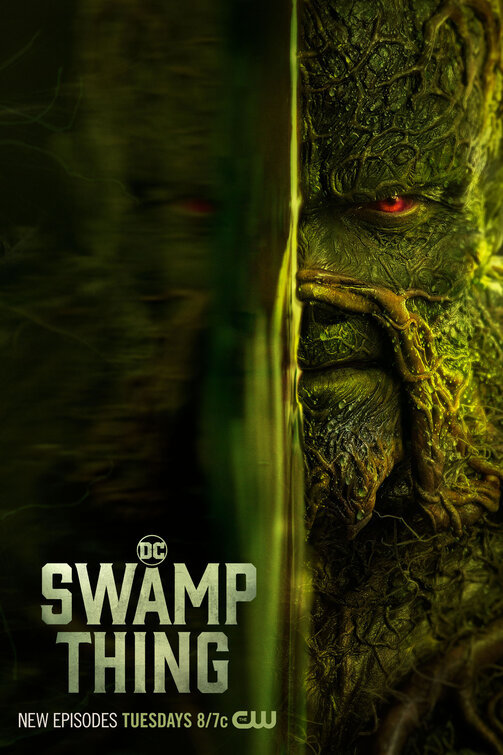

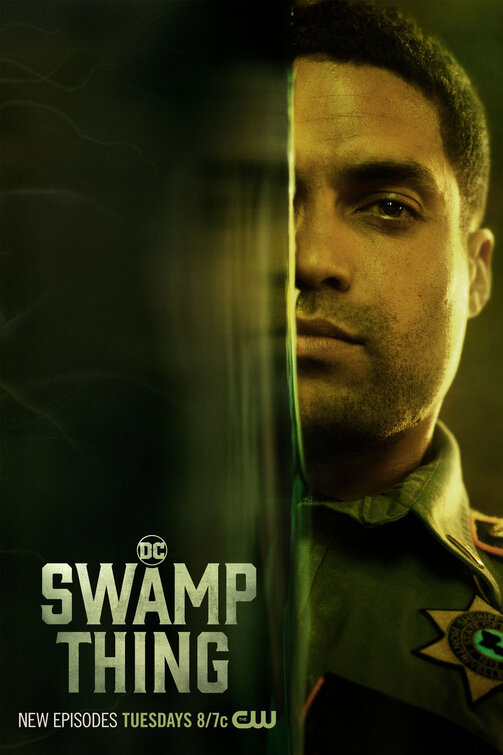

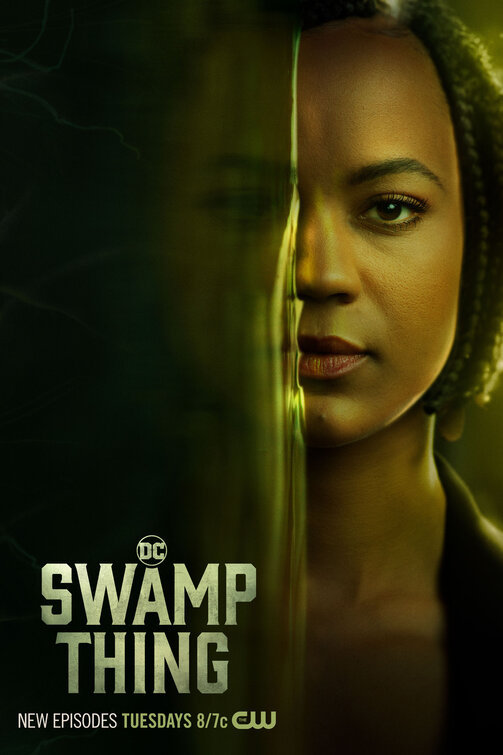

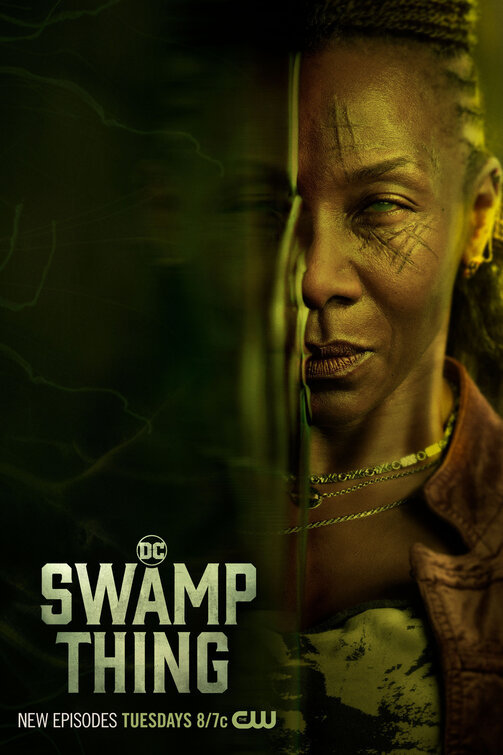



Swamp Thing
Character Posters
#swamp thing#swamp thing 2019#abby arcane#alec holland#Liz Tremayne#Daniel Cassidy#Nimue Inwudu#madame xanadu#Jason Woodrue#matt cable#swamp thing poster#Lucilia Cable#Maria Sunderland#Avery Sunderland
9 notes
·
View notes
Text
youtube
Lateral Highlight:
The invention of .99 cents pricing
Dani Siller, Bill Sunderland and Matt Parker discuss a question about an ingenious pricing scheme.
1 note
·
View note
Text


This is the fourth in our occasional series featuring luminaries of stage and screen with a strong personal and/or professional connection with Northeast England, inspired with thanks by @robbielewis. Previous profiles were of Jean Heywood, John Nightingale and Edward Wilson. This time, Sunderland born actor siblings Malcolm and Catherine Terris.
Malcolm Terris was born on January 11th, 1941, boarded at Barnard Castle School in County Durham, then worked as a cadet journalist at the Sunderland Echo before training as an actor.
He was active on British television from 1963, his style perfectly suited to larger than life characters, and is possibly best remembered for his role as Great War veteran and salt-of the-earth union leader, Matt Headley, in 34 episodes of the Tyneside interwar social-realism drama, When the Boat Comes In.

As Matt Headley, with James Bolam (Jack Ford) in When the Boat Comes In.
His more than 120 recorded screen credits include a variety of British television programmes, including Fall of Eagles, Doctor Who (Horns of Nimon, 1979), Reilly: Ace of Spies, three separate roles in Coronation Street, Our Friends in the North, The Bill, and a regular role in Rockliffe’s Babies. His final appearance was in Midsomer Murders in 2011.
His big screen appearances include as ship’s surgeon, with Anthony Hopkins as Bligh and Mel Gibson as Fletcher Christian, in The Bounty (1984), with Ricky Tomlinson in Mike Bassett: England Manager, and in Dickie Attenborough’s Chaplin, which starred Robert Downey Jnr in the title role. He has also appeared on stage including in productions of Othello and in a Broadway production of Hamlet.
He passed away at the artistes residential care home, Denville Hall, on June 6th, 2020, aged 79.
Catherine Terris was born in 1948, and trained at the London Academy of Music and Dramatic Art (LAMDA). She has been active in British television since 1972, appearing with her brother in seven episodes of When the Boat Comes In. Her other television work includes Z Cars, two roles in Coronation Street, Anna Karenina, Inspector Morse, Dalziel and Pascoe, Heartbeat, George Gently, and a regular role (15 episodes) in William and Mary with Martin Clunes and Julie Graham. She also appeared in the hugely successful feature film, The Best Exotic Marigold Hotel.
According to her page on the Coronation Street fan site, Corriepedia:
"...On stage she has appeared in productions of Faustus, A Rite Kwik Metal Tata, Andy Capp, Tight at the Back, Rose, Tom Jones, Billy Liar, Queuing for Everest and Into the Blue..."
Her most recent television screen credit is In the Club (BBC 2014-16) and latest big screen appearance was in the 2021 feature film, Martyrs Lane.

On stage with Sarah Gordy MBE (The A Word, Ralph and Katie) in the 2016 Arcola Theatre production of Into the Blue, written by Beverley Hancock and directed by Deborah Paige. Image from Sarah Gordy's official site.
#social history#working class history#tyne and wear#sunderland#british actors#british cinema#british television#british theatre#british culture#northeast england
20 notes
·
View notes
Text
In the same universe as the other Jordan / Kieran / John tomfoolery “your name is a feeling” no John in this though.
All fiction, not real, made up, NSFW etc etc. Set, essentially, a few hours ago really, is there a heat wave in Scotland right now? Well it’s fiction. You are going to have to - much like me- pretend there are no spelling / grammar whoopsies
Kieran’s never played a summer sport. Football grabbed him, right in the jugular before anything else had a chance.
Something about knowing there will be at least one game in snow or sleet means he loves a late summer heat wave.
Even when it’s too hot to drift off to sleep. There’s a game coming up and even only half under the top sheet only it’s like if he moves an inch he’ll start to sweat.
Maybe it’s a real curse? Some Sunderland fan gave a witch a pint of blood and both sides of his pillow will be hot forever.
Every sound in the hotel is like a dripping tap. Impossible to ignore, the anticipation of the next drop getting his skin twitching in advance. Sunderland. He can’t get his brain to cool down any more than his skin.
Kieran texts Jordan “too hot to sleep.” Includes a string of random emojis because Jordan will try and make them mean something but it really is just a sun then a ball then a pig then flames.
There is no reply, not shocking at one in the morning. “Can’t sleep.” He sends with a unicorn and a kilt. Includes all the flame icons this time.
He’s not anticipating an answer, more on the off chance the mad bastard has got enough going on in his own head he’s lying awake in bed practising insults to his team for making him work.
Kieran’s team is a constant checklist in the back of his mind, Miggy’s injury, Bruno’s distraction, whatever is brewing between Anthony and Elliot and Lewis. If Matt can head off that impending disaster.
He rolls to the other side of the bed, still hot, the witch's curse clearly extending to all linen.
His phone lights up “open the door.”
Jordan doesn’t go much for emojis. For capital letters or niceties. Kieran shoves what’s left of the sheet around his feet off and opens the door like asked.
Jordan looks softer than usual. Hair not slicked back, in a blue vest and shorts. His feet in flip flops.
Kieran tugs him in the room. “You’re not worried about room check?”
“Harry also can’t sleep.” Jordan shrugs. “Passed him in the staircase headin’ somewhere improper.”
Jordan runs his thumbs under the dark lines under Kieran’s eyes. “Was thinking of heading out anyway when you texted.”
Kieran snorts “off for a Starbucks run?”
Jordan laughs and slides his hands around Kieran’s hips right into his underwear, cupping his ass. “I was thinking about a swim. Not a booty call.”
“Don’t see a towel.”
Kieran drops his voice, just for the way Jordan’s eyelids will lower, the way he will lick his lips. “Don’t see trunks.”
“Distracted by a text love.”
Jordan tilts his head back and Kieran runs his hands up Jordan’s forearms, resting on the inside of his elbows, nuzzling his neck.
Gareth might huff in a meeting but he doesn’t give a shit about the older players sleeping arrangements if it doesn’t affect the team. Jordan using the stairs not the elevator sends a little thrill through Kieran. Stupid to feel like a boy getting away with something.
Like being a kid having a midnight snack, like slipping out a bedroom window to meet your mates when everyone else is sleeping.
He kisses Jordan’s skin, nipping a little. Jordan makes a soft “mm” noise but lets Kieran have his way. Asks, “Why can’t you sleep?”
“Too hot. I can't get comfortable.”
“Go in the hallway, like a sauna in there compared to the rooms.” Kieran laughs. Right into the notch at the bottom of Jordan’s throat.
“Don’t want to put more clothes on.” It’s a cheesy line, and Kieran only says it to make Jordan laugh which he does. Tries to stifle it.
“You don’t have much to take off.”
Jordan’s hands move firm and hot over the round of Kieran’s ass.
“If you can’t sleep and you don’t want to swim, well then, what do you want?” Jordan pulls Kieran against him, neither of them hard yet but Kieran can feel the bump of their cocks getting interested .
Kieran tilts his head up for a kiss, Jordan gives him a lazy grin first. His line was even cheesier but Kieran isn’t going to call him on it.
Too hot and too late for anything acrobatic, just hands that roll over slowly, Kieran’s chest feels like a kiln. Too fucking hot, something forming inside it.
“Get naked,” Jordan says, helpfully tugging his pants down from the bottom until Kieran kicks them off.
Jordan pulls off his clothes too, leaves them in a puddle of blue and England logos on his flip flops.
Jordan nugdges him back and Kieran goes easily. The pull and promise of sleep another anticipation he won’t share with Jordan. Can hear him bitching he’s not a sleeping tablet, not a magic pill. Not a witches curse.
Kieran stretches, the pleasure of the resistance of his muscles as Jordan takes a lazy slow path around his upper body, over his collar and sternum.
Kieran’s not going to drift of like this, not exactly, running his fingers across Jordan’s hair rather theough through it. Jordan slides across his nipples, he sucks and coaxes them with his tongue, only switching sides after he’s satisfied with some internal marker he’s chosen, how hard they get maybe, how much Kieran sighs.
Jordan is a magic pill though, Kieran shifting around the bed as Jordan’s hands prompt, not focused on anything more than the next place Jordan’s mouth touches until he says; “Spread your legs for me. Open up.”
Wet fingers sit at Kieran’s hole, gently nudging and then sliding in easy.
“Fuck,” Kieran gasps. He’d seen Jordan pull the lube out of pocket before he’d kicked his shorts off, more an expectation, his brain and mouth preoccupied with the kiss.
“Good?” Jordan’s voice is low, he’s as into it. Kieran doesn’t know if he plans on fucking him or just jerking off but either is fine. His mind distracted from everything that had consumed him up until a few minutes ago.
“Yeah.” He rocks into the push of Jordan’s fingers.
Jordan plays for a while, caressing just inside and then dragging soft fingertips over his rim. Even though it’s late the heat waves feels like a cocoon not an oppressive blanket like before. Kieran shifts but not a lot as Jordan slides his fingers in deeper.
Can feel sweat soft in the small of his back. Keeps his eyes half open, watching Jordan come closer for the occasional kiss then pull back to watch his fingers open Kieran up.
Kieran enjoys lying there his body biddable to a slow encroaching orgasam. Thinks about calling Jordan a possessive bastard out loud, but he’s gotten used to it. The way his eyes gleam when Kieran lies back for him.
“I bet I could fuck your throat so easy right now, all the way in,” Jordan says. “You’re completely relaxed.”
Kieran licks his lips and smiles. “That’s a good idea. It’d be nice. Go for it.” Jordan crooks his fingers, gets his prostate in revenge at ‘nice.’. Kieran twitches, from slow moving to boiling, sweat pricking along his hairline.
Not following his own idea, Jordan slides his fingers out and his cock in. Kieran pulls his knees up, lets his legs splay out. Doesn’t try and hold on, Jordan settling on deep thrusts into the v of his body. Runs his hands over the skin he can feel, Jordan’s shoulders covered in freckles. The dips on the small of hia back.
His arms and legs feel as heavy as his eyes. “Gonna fall asleep.” He slurs out, his own cock is hard but it’s almost like a distraction, sleep tugging him.
“I’m not stopping if you do.” Jordan says. Doesn’t sound angry, more like he’s laughing but Kieran can’t be bothered to be annoyed by it.
“Don’t have to, you have my okay to keep going.”
Kieran kinda hears, kinda thinks he imagines, the “can’t fucking say that shit.” That Jordan gets out, fucking faster.
Jordan comes with a grunt and Kieran cups his cheeks and guides him down for a drowsy kiss.
Coming is almost an afterthought. Jordan doesn’t pull out, just rubs his hand over Kieran. It’s pleasure that comes in little eddies. Little waves nice but not urgent, like digging your toes in the sand on a warm day. Just a burst of pleasure and then it’s like Kieran knows exactly what tired is.
All the little noises in the hotel are relaxing now. Jordan pulls out and they share a couple more lazy kisses. Jordan lying alongside him. But it’s too hot to touch much, Kieran’s ankle against Jordan’s calf, a couple of their fingers knitted together.
Kieran feels caught between both feelings, sleepiness and bliss.
“Stay huh? I’ll pay your fine if you get caught.” Jordan snickers as he rolls on his side and rubs gently at Kierans hipbone. “I’ll make John pay it.” He says. “Teach him for not being here.”
“Okay,” Kieran murmurs. He stops fighting sleep, dropping off wondering if what he feels is breathing or the rhythm of Jordan’s fingers.
#and I might even tidy it up#and put on AO3#lost some oomph with injury talk#fic#kieran trippier#jordan pickford
14 notes
·
View notes
Text
Like Father, Like Son
Matt Bellamy is the son of a pop star. And not some minor, played-bass-on-the-demo-version-of-'Hi, Ho Silver Lining' pop star either. Back in 1961 20-year-old Sunderland-born George Bellamy joined The Tornados on guitar. Within a year they were the first-ever UK band to top the US charts, with their Joe Meek-produced instrumental single 'Telstar' - considered by many to be the first song to feature distortion and which went on to sell a staggering five million copies. It's a commercial feat Muse have yet to match [2006]. According to Matt, the advice imparted by Bellamy Sr. was: "Enjoy it while you're young and get laid."
Kerrang! article, 29 July 2006
#Muse band#Kerrang magazine#Kerrang#Matt Bellamy#George Bellamy#in terms of the current discussion around nepo babies... I don't think the Muse fan community is ready for this conversation#I don't think Musers are ready for the 'is Matt Bellamy a nepotism baby?' chat. I don't think I'm ready for it#but I've thought about it Quite A Bit of late and I have some thoughts on it. For another post/day but I have thought about it recently#muse interviews#2006#muse
14 notes
·
View notes
Text
Roker Park, Sunderland AFC Standard Postcard
You may also like: Roker Park, Sunderland AFC Postcard. These postcards are made from thick high-quality matte paper, so they serve as a great addition to a gift or just a thoughtful written note to a friend. • Cardboard paper • Paper weight: 7.67–10.32 oz/yd² (260–350 g/m²) • Size: 4″ × 6″ (101 × 152 mm) • Paper thickness: 0.013″ (0.34 mm) • Coated outer surface • Blank product materials…
0 notes
Text

| Indie Multifandom + Multimuse Horror RP Blog | Semi-Selective, Mutuals Only | Ships W/Chem | Multiship/Multiverse | Crossover/OC/Duplicate Friendly | 40 Muses | 11 Fandoms | 21+ Please | Minors Will Be Blocked On Sight | Mun 25+ |
| DNI IF MINOR/ANTI/SWERF/TERF | MAJOR WARNING FOR DARK/DEAD DOVE CONTENT | CANON DIVERGENT | HEAVILY HEADCANON-BASED |
| PLEASE READ RULES BYF |
| Mun | Muse List Hub | Mains List | Verses | Tags | Blog To Do List | Things I Like My RP Partners To Know | Interest Tracker | Side Blog: Follows Back/Likes From Here |
| Featured Muse: Peter Strahm | Featured Muse Masterlist | Promo - Peter |
| Playlist Masterlist |
| Ask/Starter Memes | Headcanon Memes | Munday Memes |
| Starter Call Hub | Starters I Owe | Inbox Calls | Shipping Calls |
| Type Bingo Hub | Promo Masterlist |
MUSES:
BLAIR WITCH:
Ellis Lynch, Lane
FINAL DESTINATION:
Billy Hitchcock, Rory Peters, Frankie Cheeks, Ian McKinley, Olivia Castle, Peter Friedkin
INSIDIOUS:
Steven "Specs" Stanheight-Faulkner
POPPY PLAYTIME:
CatNap
RESIDENT EVIL:
Ashley Graham, Clancy Jarvis, Ethan Winters, Luis Serra Navarro, Salvatore Moreau, Zoe Baker
SAW:
Adam Stanheight-Faulkner, Cecilia Pederson, David Stanheight-Faulkner, Lark Mason, Logan Nelson, Lynn Denlon, Mallick Scott, Mitchell "Chell" Smith, Peter Strahm, Scott Tibbs
SHROOMS:
Tara
SILENT HILL:
Eddie Dombrowski, James Sunderland, Travis Grady
THE QUARRY:
Bobby Hackett, Chris Hackett, Dylan Lenivy, Jacob Custos, Max Brinley
THE TEXAS CHAINSAW MASSACRE:
Robert "Chop Top" Sawyer
UNTIL DAWN:
Chris Hartley, Jessica Riley, Matt Taylor, Mike Munroe
---
ASKS: 27
DRAFTS: 10
STARTERS OWED: 3
1 note
·
View note
Text
Anthony's Stupid Daily Blog (868): Sat 3rd Aug 2024
I was delighted this morning to see that hundreds of my fellow Mackems were in town helping to clean up the mess that those Nazi wankers caused last night. I think that the perfect revenge for what happened would be to track down the people who orchestrated the attack, break into their homes and burn all their copies of Mein Kampf and their framed photos of Nigel Farage (I don't think that obviously). I would have gone to town and helped with the clean up as well were I not at work but nevertheless I was very happy to see this level of solidarity in my home city of Sunderland this morning. There was even a photo circulating of a Christian minister and a Muslim cleric taking a rest from the cleanup for a nice chat which I think perfectly summed up the way to move past all this hatred and bullshit. You don’t cure hate with hate After work I watched a match between Matt Riddle and Rob Van Dam which turned into a tag team match with Riddle and RVD teaming up to take on America's Most Wanted. I the comments section all the fucking idiots were writing that their tag team name should be RV-Bro which is fucking shit. The obvious tag team name for these two should be: WHOLE FUCKING BRO. It's such a shame that I don't have the patience to learn how to set up my own YouTube channel and that I'm self concious about my looks and voice because if I wasn't I would be the top wrestling content creator on YouTube, especially since most of the top ones have had their reputations shattered due to sexual misconduct scandals.
0 notes
Text

I am sooooo happy to say that with less than 2 days to go, the Morning Hate Boosted campaign has surpassed its stretch goal of $25,000 NZD!!
Well done and thank you so much to everyone who supported by sharing the link, donating, etc. 💛💛💛💛
I'm so excited for Dean and the rest of the team, and look forward to the finished film. All that extra funding means they can put the finishing touches on it that they'd hoped for.
#morning hate#dean o'gorman#dean ogorman#dean o’gorman#aidan turner#graham mctavish#alexander borgers#cohen holloway#matt sunderland#craig hall#the hobbit cast#sara wiseman#jared turner#jed brophy#andrew munro#milo cawthorne#david de lautour#reef ireland
32 notes
·
View notes
Text
Commons Vote
On: Finance (No. 2) Bill: Third Reading
Ayes: 215 (98.6% Con, 0.9% Ind, 0.5% DUP) Noes: 19 (94.7% SNP, 5.3% PC) Absent: ~416
Likely Referenced Bill: Finance (No. 2) Act 2010
Description: A Bill to grant certain duties, to alter other duties, and to amend the law relating to the National Debt and the Public Revenue, and to make further provision in connection with finance.
Originating house: Commons Current house: Unassigned Bill Stage: Royal Assent
Individual Votes:
Ayes
Conservative (211 votes)
Aaron Bell Alan Mak Alberto Costa Alec Shelbrooke Alex Burghart Alex Chalk Alicia Kearns Alok Sharma Amanda Milling Andrew Griffith Andrew Jones Andrew Lewer Andrew Murrison Andrew Percy Andrew Selous Andy Carter Angela Richardson Anna Firth Anne Marie Morris Anne-Marie Trevelyan Anthony Browne Antony Higginbotham Ben Everitt Ben Spencer Ben Wallace Bernard Jenkin Bill Wiggin Bim Afolami Bob Blackman Bob Seely Brandon Lewis Caroline Ansell Caroline Nokes Charles Walker Cherilyn Mackrory Chris Clarkson Chris Grayling Chris Green Chris Philp Conor Burns Craig Tracey Craig Williams Damian Hinds Daniel Kawczynski Danny Kruger David Davis David Duguid David Jones David Rutley David Simmonds Dean Russell Dehenna Davison Derek Thomas Desmond Swayne Duncan Baker Edward Argar Edward Leigh Elizabeth Truss Elliot Colburn Esther McVey Felicity Buchan Fiona Bruce Gagan Mohindra Gareth Bacon Gareth Davies Gareth Johnson Gary Sambrook Gavin Williamson Geoffrey Clifton-Brown Gillian Keegan Graham Brady Graham Stuart Greg Hands Greg Smith Guy Opperman Harriett Baldwin Heather Wheeler Helen Whately Holly Mumby-Croft Huw Merriman Iain Duncan Smith Iain Stewart Jack Brereton Jack Lopresti Jackie Doyle-Price Jacob Rees-Mogg Jacob Young James Cartlidge James Cleverly James Davies James Duddridge James Sunderland James Wild Jane Hunt Jane Stevenson Jeremy Quin Jerome Mayhew Jo Churchill John Glen John Howell John Lamont Jonathan Djanogly Jonathan Gullis Julia Lopez Julian Lewis Julian Smith Julian Sturdy Justin Tomlinson Katherine Fletcher Kelly Tolhurst Kemi Badenoch Kevin Hollinrake Kieran Mullan Kit Malthouse Laura Farris Laura Trott Lee Rowley Leo Docherty Lia Nici Liam Fox Lisa Cameron Louie French Lucy Frazer Luke Hall Marcus Jones Mark Fletcher Mark Francois Mark Garnier Mark Logan Martin Vickers Matt Hancock Matt Warman Matthew Offord Mel Stride Michael Ellis Michael Fabricant Michael Gove Michael Tomlinson Mike Freer Mike Wood Mims Davies Neil O'Brien Nick Fletcher Nick Gibb Nicola Richards Nigel Huddleston Paul Beresford Paul Holmes Paul Howell Pauline Latham Penny Mordaunt Peter Aldous Peter Bottomley Philip Dunne Philip Hollobone Priti Patel Ranil Jayawardena Rebecca Harris Rebecca Pow Rehman Chishti Richard Bacon Richard Drax Richard Fuller Rob Butler Robbie Moore Robert Buckland Robert Courts Robert Goodwill Robert Halfon Robert Largan Robert Syms Robin Millar Robin Walker Royston Smith Sajid Javid Sally-Ann Hart Saqib Bhatti Sara Britcliffe Sarah Dines Scott Mann Selaine Saxby Shailesh Vara Sheryll Murray Simon Baynes Simon Clarke Simon Fell Simon Hart Simon Hoare Simon Jupp Stephen Metcalfe Steve Baker Steve Brine Steve Tuckwell Stuart Andrew Suzanne Webb Theo Clarke Theresa May Theresa Villiers Thérèse Coffey Tobias Ellwood Tom Hunt Tom Pursglove Tom Randall Tom Tugendhat Tracey Crouch Vicky Ford Victoria Atkins Victoria Prentis Wendy Morton Will Quince William Cash
Independent (2 votes)
Mark Menzies William Wragg
Democratic Unionist Party (1 vote)
Jim Shannon
Noes
Scottish National Party (18 votes)
Allan Dorans Amy Callaghan Angela Crawley Anne McLaughlin Brendan O'Hara Chris Law Chris Stephens David Linden Deidre Brock Joanna Cherry John Nicolson Kirsty Blackman Marion Fellows Owen Thompson Peter Grant Philippa Whitford Richard Thomson Stewart Malcolm McDonald
Plaid Cymru (1 vote)
Hywel Williams
1 note
·
View note
Text
youtube
Lateral Highlight:
When Brad Pitt caused a walk-out
Dani Siller, Bill Sunderland and Matt Parker discuss a question about when Brad Pitt caused people to walk out at the cinema.
0 notes
Text
Because I am a writer, and because I am a hoarder, my apartment is littered with notebooks that contain a mixture of journal entries and school assignments. Many pages don’t have dates, but I can tell which era of my life they correspond to just by looking at the handwriting. In the earliest examples, from elementary school, my print is angular, jagged; even the s’s and j’s turn sharp corners. In middle school, when I wanted to be more feminine (and was otherwise failing), I made my letters rounder, every curve a bubble ready to pop. In my junior year of high school, when it was time to get serious about applying to college, I switched to cursive, slender and tightly controlled.
Each of my metamorphoses was made in keeping with a centuries-old American belief that people—types of people, even—can be defined by how they write their letters. Now, though, this form of signaling may be obsolete. In the age of text on screens, many of us hardly write by hand at all, so we rarely get the chance to assess one another’s character through penmanship. Handwriting, as a language of its own, is dying out.
Over the centuries, the way people read that language has shifted. Until the 1800s, at least in the U.S., writing styles were less an act of self-expression than a marker of your social category, including your profession. “There were certain font types for merchants, for example, that were supposed to reflect the efficiency and the speed with which merchants work,” Tamara Plakins Thornton, a historian at the University at Buffalo and the author of Handwriting in America, told me. Lawyers used a different script, aristocrats another, and so on. The distinctions were enforced—by social norms, by teachers, by clients and colleagues and employers.
Men and women, too, were assigned their own fonts. Men were taught “muscular handwriting,” Carla Peterson, an emeritus professor of English at the University of Maryland, told me. They used roundhand, a larger script that was meant to be produced with more pressure on the quill or pen; women, by contrast, learned the narrower Italian script, akin to today’s italics. The latter style was compressed, says Ewan Clayton, a handwriting expert at the University of Sunderland, in the United Kingdom, in the same way that women’s waists might be limited by contemporary fashion. Eventually, women switched to using roundhand too.
The idea that handwriting styles might differ meaningfully from one person to another—and that those differences could be a means of showing your true nature—really took off in the 19th century, around the time that business correspondence and records started being outsourced to the typewriter. As penmanship was freed from professional constraints, it became more personal. “It was really believed that handwriting could be the articulation of self, that indeed the character of script said something about the character of a person,” says Mark Alan Mattes, an assistant English professor at the University of Louisville and the editor of the upcoming collection Handwriting in Early America.

Samples of “purely intuitive” (top) and “purely deductive” (bottom) handwriting styles from Talks on Graphology by Helen Lamson Robinson and M. L. Robinson
Graphological tendencies continued into the early 20th century, when researchers published studies proclaiming that readers could guess a person’s gender from their script with better-than-chance accuracy—as if students hadn’t still been taught that boys and girls should write in different ways as of just a few decades prior. Through the 1970s, scientists were plumbing handwriting for character traits; one study found that “missing i dots are related to the nonsubmissive, non-egocentric, socially interested person,” whereas the “number of circled i dots relates positively to the intelligent and sophisticated personality.”
Handwriting analysis moved further toward the fringe in the age of computer connectivity, when typing took over. “We are witnessing the death of handwriting,” Time proclaimed in 2009. Things have only gotten more digital since then. I now spend half of my waking life talking with my co-workers, and I have no idea what any of their writing looks like. Same for the subset of my friends who don’t happen to send birthday cards. One of my best friends is getting married next year, and I have never seen her fiancé’s handwriting. How am I supposed to know whether he tends toward deduction or intuition, whether he’s intelligent or socially interested, whether he’s an artist or a serial killer?
Let me be clear: Graphology is, as Thornton told me, “complete B.S.” Very few innate factors influence a person’s penmanship. Neither legibility nor messiness indicates intelligence. (Both claims have been made.) Handwriting can be used to diagnose conditions that affect a person’s movements, such as Parkinson’s, but you can’t learn anything about a person’s moral fiber by how they cross their t’s. What you can learn is how that person has been socialized to present themselves to the world, says Seth Perlow, an associate English professor at Georgetown. Doctors have a culture of sloppy writing; teen girls have a culture of dotting their i’s with tiny hearts. Girls don’t write that way because they’re feminine; they write that way because they’ve learned that tiny hearts are associated with femininity.
I remember practicing my letters as a kid when I got bored in class, adjusting the parts I didn’t like, adding and removing the belts from my 7s, the caps from my a’s. Testing out a new style was like trying on a new outfit in front of a mirror—assessing how it looked, knowing other people would see it too. Now, as handwriting becomes less and less enmeshed in our daily lives, Thornton told me, “there’s good reason to think this is not an arena for self-expression. It’s just something you have to learn and get away with as best you can.” If you want to assert your identity, and you want people to see it, you’re more likely to do so by sculpting your appearance, adding your pronouns to your Instagram bio, or updating LinkedIn so everyone knows you’re a merchant without having to decipher your chicken scratch.
In fact, many of the qualities that were once conveyed with a certain type of handwriting—literary bent or emotional openness, for example—may now be conveyed by the act of putting pen to paper at all. Perlow has studied the practice of posting photos of handwritten poems on Instagram, and he told me that it “conjures a feeling of personal authenticity or expressiveness or direct contact with the personality of the poet.”
Tech companies have even tried to sell that feeling, in the form of computer-generated “handwriting.” Services such as Handwrytten, Simply Noted, and Pen Letters allow customers to type out a message that a robot will then transcribe, using an actual pen, in any number of “handwriting” styles. (The robot-written letter is then mailed on your behalf.) But these tools run the risk of conjuring less a sense of personal authenticity than one of inconsiderate laziness. If a friend or family member sent me one of these cards, I’d be annoyed that they didn’t put in the time, or the work, to write out a message with their own, human hand.
Perhaps that’s really what handwriting comes down to in the digital age: time and work. My husband and I write letters to each other a few times every year, and it’s a grueling act of love. Figuring out what I want to say is an emotional and intellectual project. But after a few paragraphs, the challenge becomes mostly physical. The muscles of my right palm start to cramp up; my ring finger aches from where I rest the pen against it. I’d like to think my determination to write through the discomfort says more about me than the script I settled on a decade ago.
0 notes
Text
Because I am a writer, and because I am a hoarder, my apartment is littered with notebooks that contain a mixture of journal entries and school assignments. Many pages don’t have dates, but I can tell which era of my life they correspond to just by looking at the handwriting. In the earliest examples, from elementary school, my print is angular, jagged; even the s’s and j’s turn sharp corners. In middle school, when I wanted to be more feminine (and was otherwise failing), I made my letters rounder, every curve a bubble ready to pop. In my junior year of high school, when it was time to get serious about applying to college, I switched to cursive, slender and tightly controlled.
Each of my metamorphoses was made in keeping with a centuries-old American belief that people—types of people, even—can be defined by how they write their letters. Now, though, this form of signaling may be obsolete. In the age of text on screens, many of us hardly write by hand at all, so we rarely get the chance to assess one another’s character through penmanship. Handwriting, as a language of its own, is dying out.
Over the centuries, the way people read that language has shifted. Until the 1800s, at least in the U.S., writing styles were less an act of self-expression than a marker of your social category, including your profession. “There were certain font types for merchants, for example, that were supposed to reflect the efficiency and the speed with which merchants work,” Tamara Plakins Thornton, a historian at the University at Buffalo and the author of Handwriting in America, told me. Lawyers used a different script, aristocrats another, and so on. The distinctions were enforced—by social norms, by teachers, by clients and colleagues and employers.
Men and women, too, were assigned their own fonts. Men were taught “muscular handwriting,” Carla Peterson, an emeritus professor of English at the University of Maryland, told me. They used roundhand, a larger script that was meant to be produced with more pressure on the quill or pen; women, by contrast, learned the narrower Italian script, akin to today’s italics. The latter style was compressed, says Ewan Clayton, a handwriting expert at the University of Sunderland, in the United Kingdom, in the same way that women’s waists might be limited by contemporary fashion. Eventually, women switched to using roundhand too.
The idea that handwriting styles might differ meaningfully from one person to another—and that those differences could be a means of showing your true nature—really took off in the 19th century, around the time that business correspondence and records started being outsourced to the typewriter. As penmanship was freed from professional constraints, it became more personal. “It was really believed that handwriting could be the articulation of self, that indeed the character of script said something about the character of a person,” says Mark Alan Mattes, an assistant English professor at the University of Louisville and the editor of the upcoming collection Handwriting in Early America.

Samples of “purely intuitive” (top) and “purely deductive” (bottom) handwriting styles from Talks on Graphology by Helen Lamson Robinson and M. L. Robinson
Graphological tendencies continued into the early 20th century, when researchers published studies proclaiming that readers could guess a person’s gender from their script with better-than-chance accuracy—as if students hadn’t still been taught that boys and girls should write in different ways as of just a few decades prior. Through the 1970s, scientists were plumbing handwriting for character traits; one study found that “missing i dots are related to the nonsubmissive, non-egocentric, socially interested person,” whereas the “number of circled i dots relates positively to the intelligent and sophisticated personality.”
Handwriting analysis moved further toward the fringe in the age of computer connectivity, when typing took over. “We are witnessing the death of handwriting,” Time proclaimed in 2009. Things have only gotten more digital since then. I now spend half of my waking life talking with my co-workers, and I have no idea what any of their writing looks like. Same for the subset of my friends who don’t happen to send birthday cards. One of my best friends is getting married next year, and I have never seen her fiancé’s handwriting. How am I supposed to know whether he tends toward deduction or intuition, whether he’s intelligent or socially interested, whether he’s an artist or a serial killer?
Let me be clear: Graphology is, as Thornton told me, “complete B.S.” Very few innate factors influence a person’s penmanship. Neither legibility nor messiness indicates intelligence. (Both claims have been made.) Handwriting can be used to diagnose conditions that affect a person’s movements, such as Parkinson’s, but you can’t learn anything about a person’s moral fiber by how they cross their t’s. What you can learn is how that person has been socialized to present themselves to the world, says Seth Perlow, an associate English professor at Georgetown. Doctors have a culture of sloppy writing; teen girls have a culture of dotting their i’s with tiny hearts. Girls don’t write that way because they’re feminine; they write that way because they’ve learned that tiny hearts are associated with femininity.
I remember practicing my letters as a kid when I got bored in class, adjusting the parts I didn’t like, adding and removing the belts from my 7s, the caps from my a’s. Testing out a new style was like trying on a new outfit in front of a mirror—assessing how it looked, knowing other people would see it too. Now, as handwriting becomes less and less enmeshed in our daily lives, Thornton told me, “there’s good reason to think this is not an arena for self-expression. It’s just something you have to learn and get away with as best you can.” If you want to assert your identity, and you want people to see it, you’re more likely to do so by sculpting your appearance, adding your pronouns to your Instagram bio, or updating LinkedIn so everyone knows you’re a merchant without having to decipher your chicken scratch.
In fact, many of the qualities that were once conveyed with a certain type of handwriting—literary bent or emotional openness, for example—may now be conveyed by the act of putting pen to paper at all. Perlow has studied the practice of posting photos of handwritten poems on Instagram, and he told me that it “conjures a feeling of personal authenticity or expressiveness or direct contact with the personality of the poet.”
Tech companies have even tried to sell that feeling, in the form of computer-generated “handwriting.” Services such as Handwrytten, Simply Noted, and Pen Letters allow customers to type out a message that a robot will then transcribe, using an actual pen, in any number of “handwriting” styles. (The robot-written letter is then mailed on your behalf.) But these tools run the risk of conjuring less a sense of personal authenticity than one of inconsiderate laziness. If a friend or family member sent me one of these cards, I’d be annoyed that they didn’t put in the time, or the work, to write out a message with their own, human hand.
Perhaps that’s really what handwriting comes down to in the digital age: time and work. My husband and I write letters to each other a few times every year, and it’s a grueling act of love. Figuring out what I want to say is an emotional and intellectual project. But after a few paragraphs, the challenge becomes mostly physical. The muscles of my right palm start to cramp up; my ring finger aches from where I rest the pen against it. I’d like to think my determination to write through the discomfort says more about me than the script I settled on a decade ago.
0 notes
Link
[ad_1] A major search and rescue effort was launched on Saturday (August 19) afternoon after reports a woman had got into difficulty off Seaham Harbour. Lifeboat, coastguard, and helicopter teams rushed to the scene at about 3.15pm and a woman was taken to hospital in Sunderland after being pulled from the water. Read more: Village turns out in force for orphaned Darlington brothers as appeal nears £20,000 RNLI crews have revealed that a teenage swimmer had got into difficulty around 250 meters from the shore. The RNLI lifeboat at the scene. (Image: KEVIN JACKSON) Duty coxswain Matt Adams said: “We were lucky to find the casualty so quickly who was almost a mile off the harbour and was extremely tired but this is the sort of job we train for on a regular basis with good team work from my fellow volunteers we brought the incident to a safe and satisfactory conclusion.” The helicopter seen coming in to land. (Image: NORTHERN ECHO) . (Image: KEVIN JACKSON) A lifeboat crew located the teenage swimmer and were able to take the casualty aboard the boat and provide casualty care. Read next: Get more from The Northern Echo with a Premium Plus digital subscription from as little as only £1.50 a week. Click here. A Coastguard helicopter lowered a paramedic on to the lifeboat where the casualty was then assessed. Both the paramedic and the casualty were then placed on to the inshore lifeboat and transferred to Seaham Harbour where the local emergency services were waiting to assist. Yesterday (Saturday) Durham Police confirmed it had been called to the incident with the police helicopter also launched. [ad_2]
0 notes